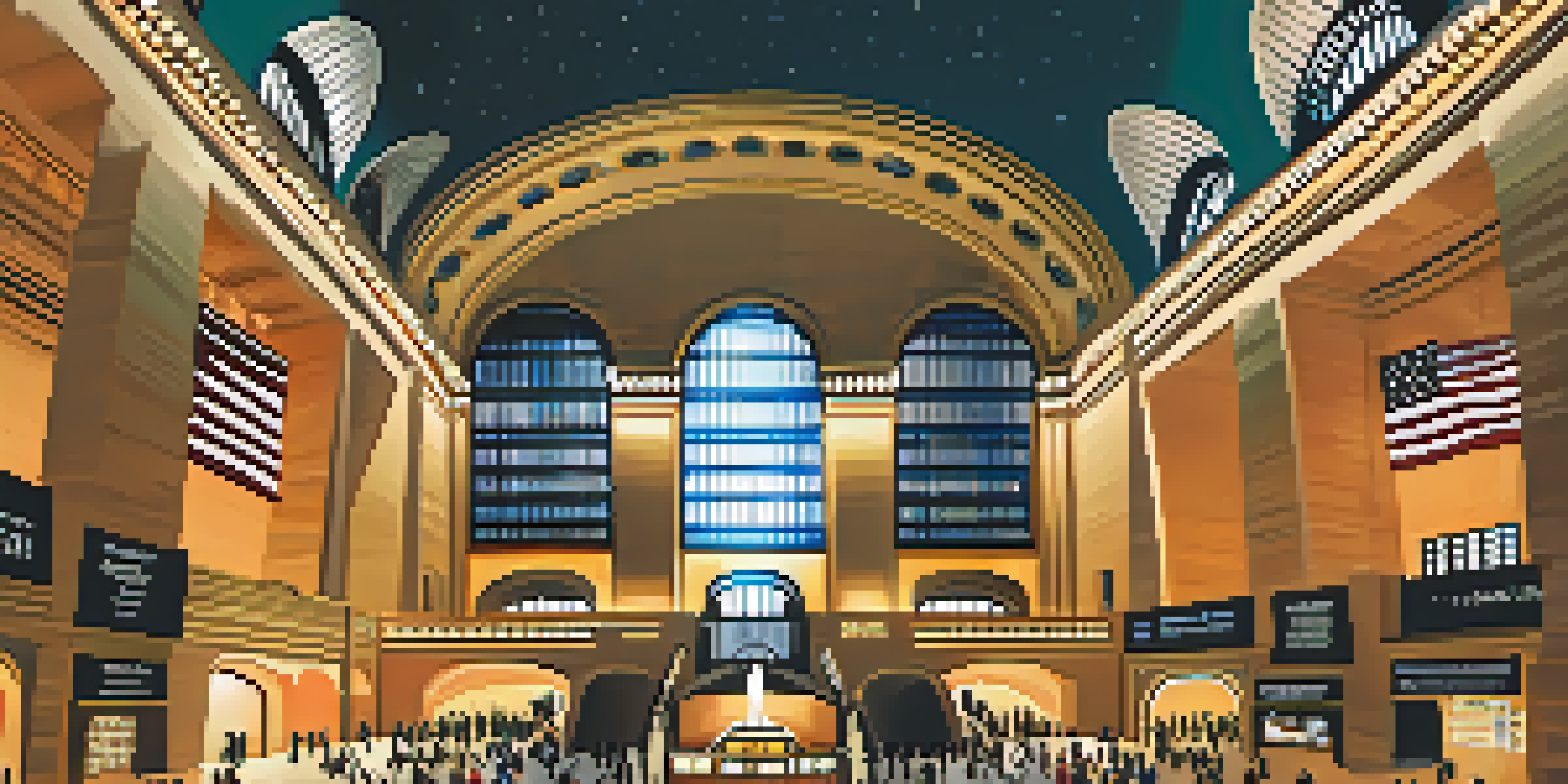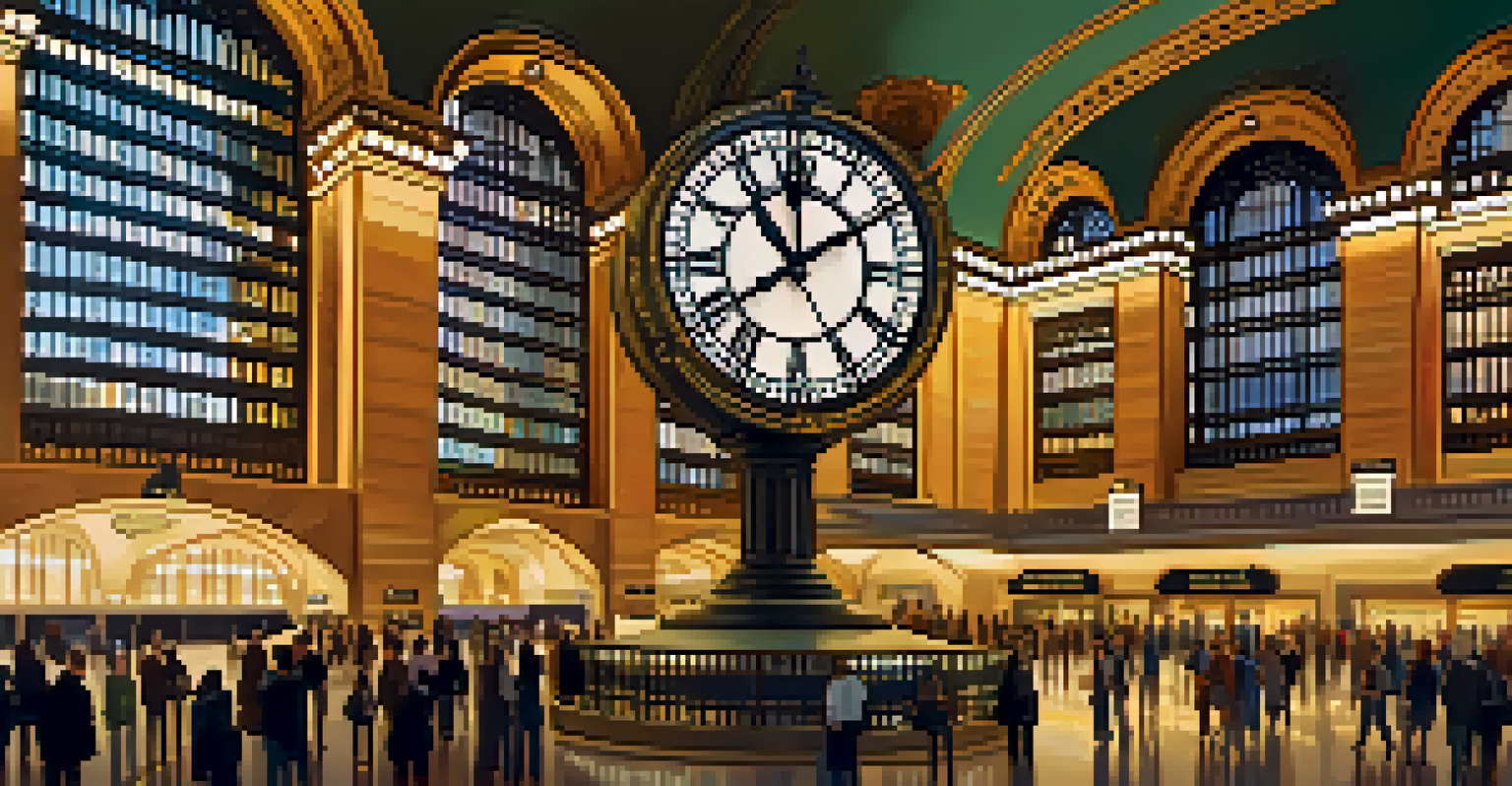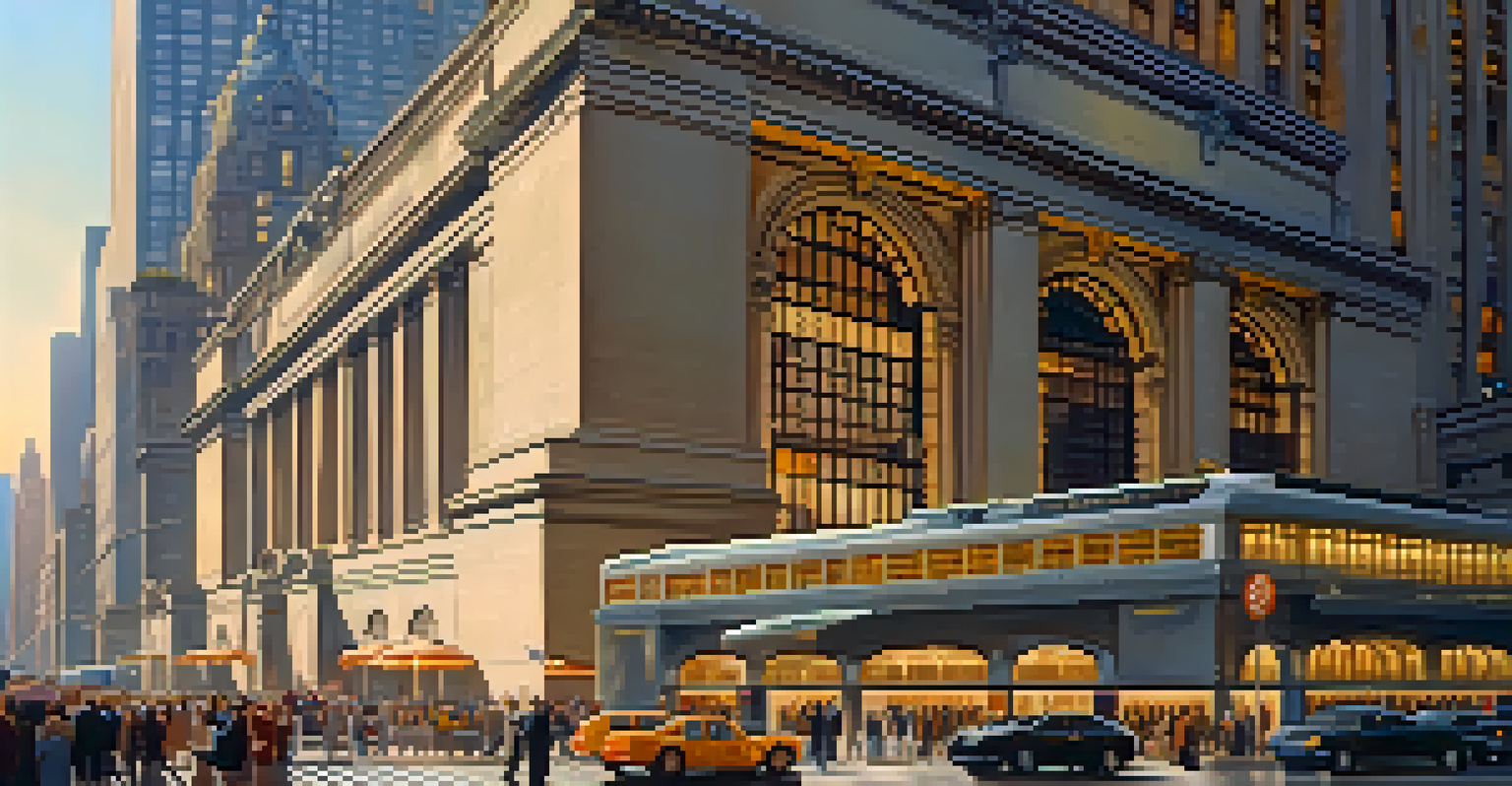The Beaux-Arts Elegance of Grand Central Terminal Unveiled

A Glimpse into Beaux-Arts Architecture
Beaux-Arts architecture, originating from the École des Beaux-Arts in Paris, emphasizes grandeur and classic beauty. This style is characterized by its symmetrical shapes, elaborate detailing, and use of marble and other luxurious materials. Grand Central Terminal is a quintessential example of this architectural movement, showcasing how functionality and elegance can coexist harmoniously.
Architecture is the art of how to waste space.
When you step into Grand Central, the soaring ceilings adorned with intricate murals transport you to another era. The iconic arched windows and ornate cornices reflect the meticulous craftsmanship of the time. Each detail, from the grand staircase to the celestial dome, speaks volumes about the vision of architects who sought to create not just a train station, but a landmark.
This architectural style is not just about aesthetics; it also serves a purpose. The layout of Grand Central facilitates the flow of passengers while providing spaces for social interaction and leisure. Understanding the principles of Beaux-Arts helps us appreciate the thought and intention behind the terminal's design.
The History Behind Grand Central Terminal
Constructed between 1903 and 1913, Grand Central Terminal was born out of necessity as rail travel surged in popularity. The original station, built in 1871, was deemed too small to handle the growing number of commuters. Thus, the vision for a grander terminal emerged, one that would reflect the aspirations of New York City at the time.

The architectural competition to design the new terminal attracted some of the best talents of the day, resulting in a blend of styles, predominantly Beaux-Arts. The winning design by the architectural firms of Warren and Wetmore, along with Reed and Stem, set the stage for a building that would become a symbol of the city. It was a bold statement about progress, ambition, and the importance of public spaces.
Beaux-Arts Beauty at Grand Central
Grand Central Terminal exemplifies Beaux-Arts architecture, showcasing grandeur and meticulous design that marries functionality with elegance.
Throughout its history, Grand Central has played a crucial role in the lives of New Yorkers and visitors alike. From its opening day to the present, the terminal has endured through wars, economic downturns, and changes in transportation technology, proving its resilience and lasting significance.
Exploring the Iconic Grand Central Dome
One of the most striking features of Grand Central Terminal is its stunning celestial dome, which rises 120 feet above the main concourse. This magnificent structure is painted with over 2,500 stars and constellations, creating a mesmerizing view for all who enter. The dome serves as a reminder of the connection between the earth and the sky, adding to the terminal's grandeur.
A building is not just a place to be but a way to be.
Interestingly, the night sky depicted on the dome is not entirely accurate; it is reversed, showcasing the constellations as if viewed from above. This artistic choice adds a unique twist, sparking curiosity and conversation among visitors. The dome’s vivid colors and intricate details are a testament to the artistic vision that shaped Grand Central.
The dome is more than just a visual delight; it also plays an essential role in the acoustics of the terminal. This remarkable feature allows sounds to travel in ways that enhance the experience of the space. Whether you're meeting a friend or simply soaking in the ambiance, the dome creates a sense of intimacy amidst the hustle and bustle.
The Grand Central Clock: A Timeless Symbol
At the heart of Grand Central Terminal lies the iconic clock located atop the information booth. Made of brass and opal, this clock has become a symbol of the terminal itself, representing the passage of time and the journeys taken by countless travelers. Its intricate design and central location make it a popular meeting point for friends and family.
The clock is not just a functional timepiece; it also embodies the spirit of the terminal. With a value estimated at over $10 million, it is one of the most photographed clocks in the world. The clock’s craftsmanship reflects the dedication to detail that characterizes Beaux-Arts architecture, marrying artistry with utility.
Cultural Landmark of NYC
Beyond being a transit hub, Grand Central is a cultural icon, hosting events and serving as a backdrop for art and film, reflecting the spirit of New York City.
Beyond its aesthetic appeal, the clock serves as a reminder of the importance of time in travel. Whether catching a train or waiting for a loved one, the clock anchors the experience, making it a cherished element of Grand Central’s identity.
The Bustling Atmosphere of Grand Central
Walking through Grand Central Terminal is like stepping into a vibrant tapestry of life. Each day, thousands of commuters, tourists, and locals pass through its grand halls, creating a dynamic atmosphere that is both electric and welcoming. The sounds of trains, conversations, and footsteps blend into a symphony of urban life.
Street musicians often set up shop in the concourse, adding a lively soundtrack to the scene. Their melodies echo against the marble walls, enhancing the terminal's charm and making it a cultural hub. This blend of people and music transforms the space into more than just a transit point; it becomes a gathering place filled with stories.
The vibrant atmosphere is further enriched by the array of shops and restaurants that line the terminal. Whether grabbing a quick coffee or exploring artisanal food stands, visitors can enjoy a taste of New York without leaving the terminal. This bustling environment captures the essence of the city, making Grand Central a beloved landmark.
Preserving Grand Central's Legacy
In the late 20th century, Grand Central Terminal faced the threat of demolition, sparking public outcry and advocacy for its preservation. This led to a pivotal moment in heritage conservation, emphasizing the importance of protecting historical sites. The terminal was designated a National Historic Landmark in 1976, ensuring that its grandeur would be preserved for future generations.
The restoration efforts that followed were extensive and meticulous, aimed at returning the terminal to its original splendor. These efforts not only preserved the architectural beauty but also revitalized the surrounding area, encouraging economic growth and tourism. Today, Grand Central stands as a testament to the power of community and heritage.
Preserving a Historical Legacy
The preservation efforts for Grand Central Terminal have ensured that its architectural beauty and the stories within continue to inspire future generations.
Preserving Grand Central’s legacy is not just about maintaining its physical structure; it’s about honoring the stories and journeys that have unfolded within its walls. As a living monument, it continues to inspire and connect people, reinforcing the idea that history is not merely a record but a part of our ongoing narrative.
Grand Central's Role in New York City's Culture
Grand Central Terminal is more than just a transportation hub; it is a cultural landmark that embodies the spirit of New York City. Its architectural beauty and historical significance have made it a backdrop for countless films, television shows, and works of art. This cultural relevance has solidified its place in the hearts of both New Yorkers and visitors alike.
The terminal hosts various events throughout the year, from holiday markets to art exhibitions, further enriching its cultural offerings. These events draw people together, fostering a sense of community and celebration. The blend of history, art, and modern events exemplifies how Grand Central adapts to contemporary life while honoring its past.

In essence, Grand Central is a living piece of history that continues to evolve. It serves as a reminder of the city’s rich past while inspiring future generations. As we celebrate its elegance and significance, we also embrace the stories that unfold within its grand walls.